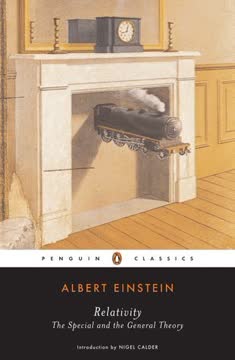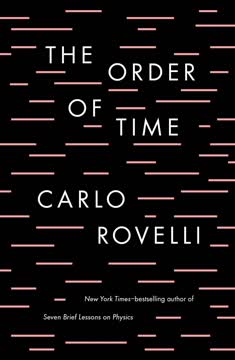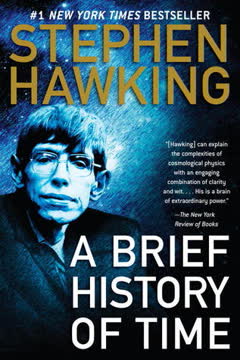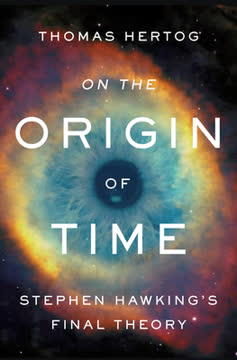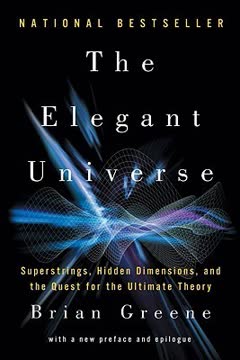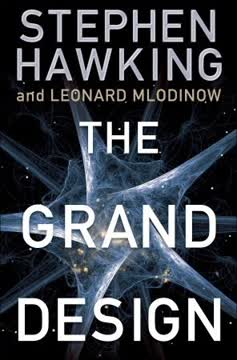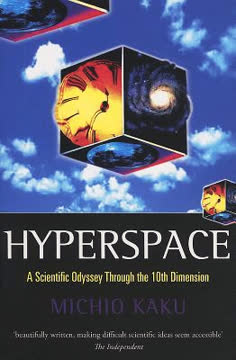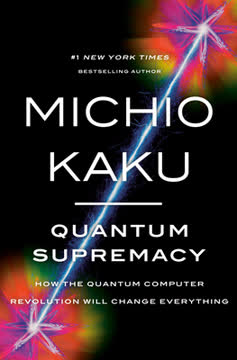Concluzii cheie
1. Căutarea unei teorii unificate a totului a condus fizica de secole
"Trebuia să fie teoria finală, un cadru unic care să unească toate forțele cosmosului și să coregrafieze totul, de la mișcarea universului în expansiune până la cel mai mic dans al particulelor subatomice."
Context istoric. Căutarea unei teorii unificate datează din Grecia antică, unde filozofii încercau să explice lumea prin elemente fundamentale. Această căutare a continuat prin legile mișcării și gravitației ale lui Newton, care au pus bazele Revoluției Industriale. Secolul al XIX-lea a văzut unificarea electricității și magnetismului de către Maxwell, conducând la era electrică.
Dezvoltări moderne. Secolul XX a adus două teorii revoluționare:
- Relativitatea lui Einstein, explicând gravitația și cosmosul
- Mecanica cuantică, descriind lumea subatomică
Aceste teorii, deși incredibil de reușite în domeniile lor, rămân incompatibile. Sfântul Graal al fizicii este găsirea unei teorii unice care să unifice toate cele patru forțe fundamentale: gravitația, electromagnetismul, forța nucleară tare și forța nucleară slabă.
2. Teoriile relativității ale lui Einstein au revoluționat înțelegerea noastră despre spațiu, timp și gravitație
"Pentru Einstein, însă, timpul era mai degrabă ca un râu. Putea să accelereze sau să încetinească pe măsură ce șerpuia printre stele și galaxii."
Relativitatea specială. Teoria lui Einstein din 1905 a arătat că:
- Viteza luminii este constantă pentru toți observatorii
- Timpul încetinește pentru obiectele care se mișcă cu viteze mari
- Masa și energia sunt echivalente (E = mc²)
Relativitatea generală. În 1915, Einstein și-a extins teoria pentru a include gravitația:
- Gravitația este curbura spațiu-timpului cauzată de obiecte masive
- Aceasta explică fenomene precum:
- Îndoirea luminii în jurul stelelor
- Precesia orbitei lui Mercur
- Existența găurilor negre
Relativitatea generală a fost confirmată de numeroase observații, inclusiv detectarea undelor gravitaționale în 2015.
3. Mecanica cuantică a dezvăluit natura probabilistică a particulelor subatomice
"Einstein a scris că 'cu cât teoria cuantică devine mai de succes, cu atât mai ridicolă pare.'"
Principii de bază. Mecanica cuantică, dezvoltată în anii 1920, descrie comportamentul materiei și energiei la scara atomică și subatomică:
- Particulele pot exista în mai multe stări simultan (superpoziție)
- Actul de măsurare afectează rezultatul (efectul observatorului)
- Particulele pot fi încurcate, influențându-se reciproc instantaneu la distanțe mari
Implicații filozofice. Aceste principii provoacă înțelegerea noastră intuitivă a realității:
- Este universul fundamental probabilistic?
- Joacă conștiința un rol în modelarea realității?
- Există multiple universuri unde toate rezultatele posibile au loc?
În ciuda naturii sale contraintuitive, mecanica cuantică a fost incredibil de reușită în explicarea fenomenelor și în permiterea tehnologiilor precum laserele și tranzistorii.
4. Modelul Standard unifică trei dintre cele patru forțe fundamentale, dar gravitația rămâne evazivă
"Astfel, treptat, o nouă teorie a început să apară din tot acest haos, numită Modelul Standard."
Componente. Modelul Standard, dezvoltat în anii 1970, descrie toate particulele elementare cunoscute și trei dintre cele patru forțe fundamentale:
- Particule:
- Quarci (6 tipuri)
- Leptoni (inclusiv electroni și neutrini)
- Bosoni (particule purtătoare de forță)
- Forțe:
- Forța nucleară tare (leagă quarcii)
- Forța nucleară slabă (dezintegrare radioactivă)
- Forța electromagnetică
Succese și limitări. Modelul Standard:
- Prezice cu acuratețe interacțiunile particulelor
- A condus la descoperirea bosonului Higgs în 2012
- Nu include gravitația
- Necesită mulți parametri arbitrar
- Nu poate explica materia întunecată sau energia întunecată
5. Teoria stringurilor propune un cadru radical nou pentru a unifica toate forțele și particulele
"Teoria stringurilor era ca un puț de petrol care brusc erupea un torent de noi ecuații."
Concept de bază. Teoria stringurilor propune că toate particulele și forțele sunt de fapt vibrații ale unor stringuri unidimensionale minuscule:
- Diferite moduri de vibrație corespund diferitelor particule
- Necesită 10 sau 11 dimensiuni (majoritatea sunt "rulate" și invizibile)
- Include în mod natural gravitația, spre deosebire de Modelul Standard
Provocări. În ciuda eleganței sale, teoria stringurilor se confruntă cu obstacole semnificative:
- Nicio dovadă experimentală încă
- Energii extrem de mari necesare pentru testare directă
- Multiple versiuni ale teoriei (unificate de teoria M)
- Prezice un vast "peisaj" de universuri posibile
Teoria stringurilor rămâne extrem de controversată, cu critici care susțin că este netestabilă și susținători care cred că este cea mai promițătoare cale către o teorie unificată.
6. Teoria totului ar putea explica originile și soarta universului însuși
"Poate că universul nostru a apărut inițial din fluctuații cuantice în Nimic."
Implicații cosmologice. O adevărată teorie a totului ar avea consecințe profunde pentru înțelegerea noastră a cosmosului:
- Originea universului:
- Explicarea Big Bang-ului
- Posibila existență a unui multivers
- Evoluția universului:
- Inflația și expansiunea
- Formarea galaxiilor și a structurii la scară largă
- Soarta universului:
- Destinul final (Marea Înghețare, Marele Colaps sau Marea Ruptură)
- Posibilitatea universurilor ciclice
Întrebări nerezolvate. Mistere cheie pe care o teorie unificată le-ar putea aborda:
- Natura materiei întunecate și a energiei întunecate
- Existența altor dimensiuni sau universuri
- Posibilitatea călătoriei în timp sau a găurilor de vierme
7. Înțelegerea cosmosului ridică întrebări profunde despre sens și existență
"Întrebarea tuturor întrebărilor pentru umanitate, problema care se află în spatele tuturor celorlalte și este mai interesantă decât oricare dintre ele, este aceea a determinării locului omului în Natură și a relației sale cu Cosmosul."
Implicații filozofice. Căutarea unei teorii a totului duce inevitabil la întrebări existențiale profunde:
- Are universul un scop sau un design?
- Există un rol pentru un creator sau Dumnezeu în cosmos?
- Cum găsim sens într-un univers potențial finit?
Perspectiva științifică. Deși știința nu poate răspunde direct la aceste întrebări, oferă un cadru pentru contemplare:
- Principiul antropic sugerează că universul nostru este fin reglat pentru viață
- Teoria multiversului propune nenumărate universuri cu proprietăți diferite
- Vastitatea și frumusețea cosmosului inspiră uimire și mirare
În cele din urmă, urmărirea unei teorii unificate nu este doar despre înțelegerea lumii fizice, ci despre locul nostru în ea și natura existenței în sine.
Ultima actualizare:
FAQ
What's "The God Equation: The Quest for a Theory of Everything" about?
- Unified Theory Goal: The book explores the quest for a single framework that unites all the forces of the universe, from the motion of galaxies to subatomic particles.
- Historical Journey: It traces the history of physics, from ancient dreams of unification to modern string theory, highlighting key scientific revolutions.
- String Theory Focus: The narrative centers on string theory as the leading candidate for a theory of everything, explaining its potential to unify gravity with quantum mechanics.
- Philosophical Implications: The book also delves into the philosophical questions about the universe's origin, structure, and meaning.
Why should I read "The God Equation: The Quest for a Theory of Everything"?
- Comprehensive Overview: It provides a thorough overview of the history and current state of theoretical physics, making complex ideas accessible.
- Scientific Insight: Readers gain insight into the minds of great physicists like Einstein and Hawking and their contributions to the quest for unification.
- Philosophical Exploration: The book addresses profound questions about the universe's purpose and the existence of a grand design.
- Engaging Narrative: Michio Kaku's engaging writing style makes the intricate world of physics both understandable and fascinating.
What are the key takeaways of "The God Equation: The Quest for a Theory of Everything"?
- Unification Dream: The pursuit of a unified theory has been a long-standing goal in physics, aiming to explain all natural forces with a single equation.
- String Theory's Role: String theory is currently the most promising candidate for a theory of everything, proposing that the universe is made of tiny vibrating strings.
- Challenges and Criticisms: Despite its potential, string theory faces significant challenges, including lack of experimental evidence and the landscape problem.
- Philosophical Questions: The book raises questions about the universe's origin, the possibility of a multiverse, and the role of a creator or grand design.
How does Michio Kaku explain string theory in "The God Equation"?
- Vibrating Strings Concept: Kaku explains that string theory posits the universe is composed of tiny, vibrating strings, with each vibration corresponding to a different particle.
- Dimensionality: The theory suggests that the universe has ten dimensions, with six of them curled up and unobservable at our scale.
- Inclusion of Gravity: Unlike other theories, string theory naturally includes gravity, making it a strong candidate for unifying all forces.
- Supersymmetry: The theory incorporates supersymmetry, which posits a symmetry between particles that make up matter and those that mediate forces.
What are the main criticisms of string theory according to "The God Equation"?
- Lack of Testability: Critics argue that string theory is difficult to test experimentally, as it requires energies far beyond current capabilities.
- Infinite Solutions: The theory predicts a multiverse with an infinite number of solutions, making it hard to determine which one describes our universe.
- Complexity and Elegance: While mathematically elegant, some physicists question whether beauty alone is a reliable guide in physics.
- Anthropic Principle: The reliance on the anthropic principle to explain why our universe is special is seen as unsatisfactory by some scientists.
What is the significance of the "God Equation" in Michio Kaku's book?
- Ultimate Goal: The "God Equation" refers to the ultimate equation that would unify all physical laws, explaining everything from the Big Bang to subatomic particles.
- Einstein's Dream: It represents the culmination of Einstein's quest for a unified field theory, a pursuit that has driven physicists for over a century.
- String Theory's Promise: String theory is seen as the closest approach to achieving this equation, with its potential to unify gravity and quantum mechanics.
- Philosophical Implications: The equation raises questions about the universe's design, purpose, and the existence of a creator.
How does "The God Equation" address the concept of a multiverse?
- Inflation Theory: The book discusses how inflation theory suggests our universe is one of many bubbles in a larger multiverse.
- String Theory's Landscape: String theory's landscape problem implies an infinite number of possible universes, each with different physical laws.
- Philosophical Questions: The multiverse concept challenges traditional notions of a single, unique universe, raising questions about our place in the cosmos.
- Anthropic Principle: The existence of a multiverse is used to explain why our universe appears fine-tuned for life, as we exist in one of the few universes where life is possible.
What are the best quotes from "The God Equation" and what do they mean?
- "The universe is a symphony of strings." This quote encapsulates the essence of string theory, suggesting that all particles and forces are manifestations of vibrating strings.
- "Did God have a choice in creating the universe?" This question, posed by Einstein, reflects the search for a unique, inevitable set of physical laws governing the universe.
- "Sometimes God throws the die where you cannot find them." Hawking's quote highlights the uncertainty and unpredictability inherent in quantum mechanics, especially in black holes.
- "Beauty is truth, truth beauty." This Keats-inspired sentiment underscores the belief that the universe's fundamental laws are both beautiful and true, guiding physicists in their quest.
How does Michio Kaku address the philosophical implications of a theory of everything?
- Existence of God: Kaku explores whether a theory of everything implies a grand design or creator, considering both scientific and theological perspectives.
- Meaning of Life: The book raises questions about whether understanding the universe's fundamental laws can provide insight into life's purpose and meaning.
- Human Understanding: Kaku suggests that a complete theory should be understandable by everyone, allowing all to participate in discussions about existence.
- Limitations of Science: He acknowledges that some questions, like the origin of the laws themselves, may remain beyond the reach of science, entering the realm of metaphysics.
What role does symmetry play in "The God Equation"?
- Unifying Principle: Symmetry is a central theme, seen as the key to unifying all forces and particles in the universe.
- Predictive Power: Symmetry helps predict new particles and phenomena, as seen in the discovery of antimatter and quarks.
- Eliminating Infinities: In string theory, supersymmetry helps cancel out infinities that plague other quantum theories, making it a candidate for a finite theory of gravity.
- Aesthetic Appeal: Symmetry is also associated with beauty in physics, guiding the search for elegant and simple explanations of complex phenomena.
How does "The God Equation" explain the relationship between quantum mechanics and general relativity?
- Conflicting Theories: The book highlights the fundamental conflict between quantum mechanics, which governs the small, and general relativity, which governs the large.
- String Theory's Promise: String theory offers a framework to reconcile these two theories by describing particles as strings, naturally incorporating gravity.
- Quantum Gravity: The quest for a theory of quantum gravity aims to unify these theories, explaining phenomena like black holes and the Big Bang.
- Experimental Challenges: Despite theoretical progress, testing the unification of these theories remains a significant challenge due to the high energies required.
What is Michio Kaku's perspective on the future of string theory?
- Ongoing Evolution: Kaku believes string theory is still evolving, with new mathematical layers being uncovered, suggesting it is not yet in its final form.
- Mathematical Consistency: He argues that the theory's ultimate validation may come from its mathematical consistency and ability to derive known physical constants.
- Experimental Hopes: While direct experimental evidence is challenging, Kaku remains hopeful that future discoveries, like dark matter or mini black holes, may support the theory.
- Patience Required: He emphasizes that scientific progress can be slow, and the ultimate understanding of string theory may take time, much like past scientific revolutions.
Recenzii
Ecuatia lui Dumnezeu primește recenzii mixte, fiind lăudată pentru prezentarea accesibilă a istoriei fizicii și a teoriei stringurilor, dar criticată pentru concizia și lipsa de profunzime. Unii cititori apreciază explicațiile clare și reflecțiile filosofice ale lui Kaku, în timp ce alții consideră conținutul superficial și înșelător. Utilizarea cuvântului "Dumnezeu" în titlu este controversată. Recenzorii observă că o mare parte din material este familiar din alte cărți populare de fizică, cu perspective noi limitate. Capitolele finale despre teoria stringurilor și implicațiile acesteia sunt considerate cele mai interesante, deși prea scurte.
Similar Books
